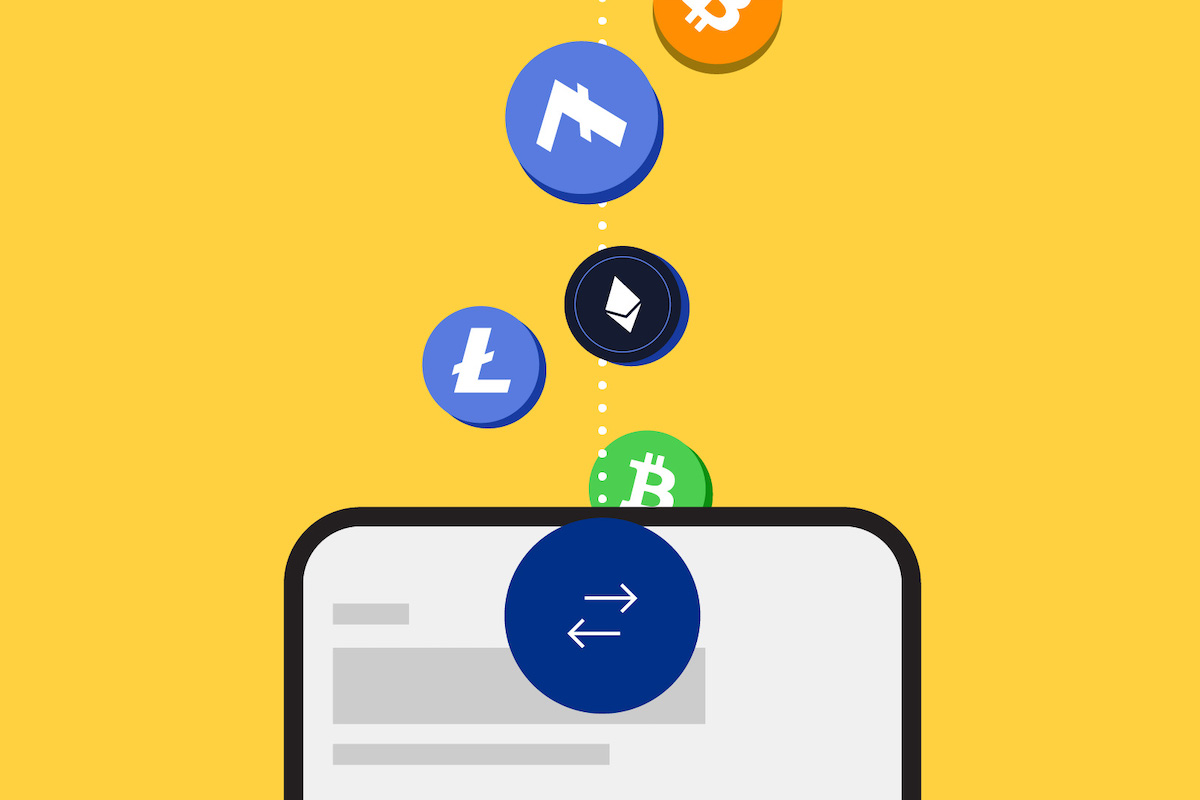Introduction
Welcome to the world of Bitcoin and the revolutionary technology behind it – the blockchain. Bitcoin has gained tremendous popularity in recent years as a decentralized digital currency that allows for secure and seamless online transactions. At the heart of this cryptocurrency lies the concept of the blockchain, a decentralized ledger that ensures transparency, immutability, and security.
The rise of Bitcoin and its underlying blockchain technology has sparked a wave of excitement and curiosity among individuals, businesses, and governments worldwide. It has opened up countless possibilities and has the potential to transform various industries, from finance and banking to supply chain management and healthcare.
In this article, we will delve deep into the world of Bitcoin and explore the intricacies of the blockchain. We will demystify the concept of a blockchain, understand how it powers the Bitcoin network, and discuss the importance, benefits, challenges, and limitations associated with it.
Whether you are a tech enthusiast, a cryptocurrency investor, or simply someone eager to understand this innovative technology, this article is your gateway to the fascinating realm of the Bitcoin blockchain. So, fasten your seatbelts and embark on this enlightening journey!
What is Bitcoin?
Bitcoin, introduced in 2009 by an anonymous person or group of individuals using the pseudonym Satoshi Nakamoto, is a decentralized digital currency that operates on a peer-to-peer network known as the Bitcoin network. Unlike traditional fiat currencies, such as the US dollar or the Euro, Bitcoin is not issued or controlled by any central authority or government.
At its core, Bitcoin is based on a groundbreaking technology known as blockchain. This digital currency allows for seamless and secure transactions to be conducted online without the need for intermediaries such as banks. Bitcoin transactions are verified by a network of computers known as miners, who solve complex mathematical problems to confirm and record each transaction on the blockchain, ensuring its authenticity and preventing double-spending.
One of the defining characteristics of Bitcoin is its limited supply. Unlike fiat currencies that can be printed at will, there will only ever be 21 million bitcoins in existence. This scarcity, combined with increasing demand, has contributed to the volatile nature of Bitcoin’s value, making it an attractive investment option for many.
Bitcoin has gained popularity due to its potential advantages over traditional financial systems. It allows for faster and cheaper cross-border transactions, as well as increased privacy and security. Moreover, Bitcoin transactions can be conducted anonymously, although the blockchain itself is transparent, with all transactions recorded and visible to the public.
While Bitcoin has faced criticisms for its association with illegal activities and its environmental impact due to energy-intensive mining processes, it continues to thrive as a disruptive force in the financial world. Its decentralized nature and potential for financial inclusivity have attracted a growing number of individuals, businesses, and even institutional investors.
In the next section, we will explore the concept of a blockchain and how it supports the functioning of Bitcoin, paving the way for a decentralized and secure digital currency.
What is a Blockchain?
At its core, a blockchain is a decentralized and transparent digital ledger that records and verifies transactions across multiple computers. It is a distributed database that eliminates the need for a central authority to validate and secure transactions. The blockchain technology was first introduced alongside Bitcoin and has since found applications beyond cryptocurrencies.
The blockchain consists of a chain of interconnected blocks, with each block containing a set of transactions. These transactions are grouped together within a block and then added to the existing chain in a sequential manner. Each block is identified by a unique cryptographic hash, which ensures the integrity and immutability of the data contained within it.
One of the key characteristics of a blockchain is its decentralization. Unlike traditional centralized systems that rely on a single point of control, the blockchain is maintained and updated by a network of computers, known as nodes. These nodes work collectively to validate and store new transactions and ensure the consensus and consistency of the blockchain.
Another defining feature of a blockchain is its transparency. While the identities of the participants involved in the transactions may remain anonymous, the transactions themselves are visible to anyone with access to the blockchain. This transparency improves accountability and trust, as every transaction can be traced back to its origin and verified by multiple parties.
Additionally, the blockchain offers robust security through the use of cryptographic techniques. Each transaction is digitally signed and encrypted, making it nearly impossible to alter or tamper with the data once it has been added to the blockchain. Furthermore, the decentralized nature of the blockchain ensures that there is no single point of failure, making it highly resistant to hacking and manipulation.
Blockchain technology has the potential to revolutionize various industries beyond finance. It can be used to streamline supply chain management, enhance voting systems, improve intellectual property rights, and enable secure digital identities, among many other applications. Its decentralized and transparent nature offers new possibilities for building trust and efficiency in a wide range of sectors.
In the next section, we will explore how the Bitcoin blockchain specifically works and how it harnesses the power of blockchain technology to enable secure and efficient transactions.
How does the Bitcoin Blockchain work?
The Bitcoin blockchain is a public ledger that records all Bitcoin transactions in chronological order. Each transaction is grouped into a block, which is then added to the existing chain of blocks. This process is accomplished through a consensus mechanism known as mining, in which miners compete to solve complex mathematical problems.
When a user initiates a Bitcoin transaction, it is broadcasted to the network and verified by the nodes. Once verified, the transaction is added to a “mempool,” a temporary storage area where pending transactions are held. Miners then collect a group of these transactions and attempt to solve a mathematical puzzle known as a proof-of-work problem.
The proof-of-work problem requires miners to make numerous calculations until they find a solution that satisfies certain criteria, such as a specific hash value. The first miner to solve the puzzle broadcasts the solution to the network, along with the new block containing the verified transactions. Other miners then validate this solution and, if correct, add the block to their copy of the blockchain.
As more blocks are added to the chain, each subsequent block refers back to the previous block, creating a chronological sequence. This linking of blocks using cryptographic hashes ensures the immutability of the blockchain. Any attempt to modify a transaction within a block would require re-solving all subsequent blocks, making it computationally infeasible to alter past transactions.
To incentivize miners to participate in the process, they are rewarded with newly minted Bitcoins, as well as transaction fees included in each block. This serves as a mechanism to secure the network and ensure the continuous operation of the Bitcoin blockchain.
It’s important to note that the Bitcoin blockchain operates in a distributed and decentralized manner, meaning no single entity controls or has the authority to manipulate the blockchain. This provides transparency, trust, and security, as transactions are verified by multiple nodes within the network.
In summary, the Bitcoin blockchain works by utilizing a consensus mechanism called mining to validate and record transactions in a chronological sequence of blocks. Miners compete to solve complex mathematical problems, and the first one to find a solution adds a new block to the chain, ensuring the integrity and security of the Bitcoin network.
The Importance of the Bitcoin Blockchain
The Bitcoin blockchain plays a pivotal role in the world of cryptocurrencies. It serves as the backbone of the Bitcoin network, enabling secure and reliable transactions without the need for intermediaries. However, its importance extends far beyond cryptocurrency, as it has the potential to disrupt and transform various industries and society as a whole.
One of the key advantages of the Bitcoin blockchain is its decentralization. Traditional financial systems rely on centralized authorities, such as banks or governments, to facilitate and verify transactions. The decentralized nature of the Bitcoin blockchain eliminates the need for intermediaries, reducing costs, enhancing efficiency, and increasing financial inclusion. This is particularly beneficial for individuals and businesses in underbanked or developing regions who may not have access to traditional banking services.
Another significant aspect of the Bitcoin blockchain is its transparency. All transactions recorded on the blockchain are public and can be viewed by anyone. While the identities of the participants remain anonymous, the transparency of the blockchain allows for increased accountability and trust, making it particularly useful for auditing purposes and supply chain management. It also acts as a deterrent for fraudulent activities, as any suspicious transactions can be easily identified and investigated.
The immutability of the Bitcoin blockchain is another important feature. Once a transaction is confirmed and added to a block, it becomes virtually impossible to alter or tamper with. This provides a high level of security and ensures the integrity of the data recorded on the blockchain. It also enables the development of smart contracts, self-executing contracts with the terms and conditions directly written into the code. Smart contracts can automate various processes, such as financial agreements and property transfers, reducing the need for third-party intervention and increasing efficiency.
The Bitcoin blockchain has also gained attention for its potential to revolutionize cross-border transactions. Traditional international transfers can be slow, costly, and subject to multiple intermediaries. With Bitcoin, transactions can be conducted directly between parties in different countries, bypassing the need for traditional banking systems. This can facilitate faster, more affordable, and accessible remittance services, benefitting individuals and businesses involved in global trade.
Furthermore, the Bitcoin blockchain and its underlying technology have paved the way for the development of numerous other cryptocurrencies and blockchain-based projects. It has spurred innovation, attracting investment and fostering the growth of a vibrant ecosystem. The exploration and adoption of blockchain technology in various industries hold the promise of increased efficiency, transparency, and security, transforming sectors such as finance, healthcare, supply chain management, and decentralized governance.
As we can see, the importance of the Bitcoin blockchain cannot be overstated. Its decentralized nature, transparency, immutability, and potential for disruption make it a transformative force in the financial world and beyond. It opens up new opportunities for financial inclusion, innovation, and the trustless exchange of value, reshaping the way we transact, collaborate, and interact with digital assets.
Benefits of the Bitcoin Blockchain
The Bitcoin blockchain offers numerous benefits that make it an attractive technology for individuals and businesses alike. These benefits extend beyond the realm of cryptocurrencies and have the potential to transform various industries. Let’s explore some of the key advantages of the Bitcoin blockchain.
Enhanced Security: The Bitcoin blockchain utilizes advanced cryptographic techniques to provide robust security. Transactions are digitally signed and encrypted, making them secure and resistant to tampering. The decentralized nature of the blockchain ensures that there is no single point of failure, reducing the vulnerability to hacking and fraudulent activities.
Transparency: The transparency of the Bitcoin blockchain allows for increased accountability and trust. All transactions are recorded on the public ledger and can be verified by anyone. This transparency is particularly useful for auditing purposes, supply chain management, and ensuring the integrity of transactions.
Decentralization: The decentralized nature of the Bitcoin blockchain eliminates the need for intermediaries, such as banks, for conducting transactions. This reduces costs, enhances efficiency, and increases financial inclusion, particularly for individuals and businesses in underbanked or developing regions.
Immutability: Once a transaction is confirmed and added to the blockchain, it becomes nearly impossible to alter or tamper with. This immutability ensures the integrity of the data recorded on the blockchain and eliminates the risk of fraud or manipulation.
Fast and Low-Cost Transactions: Bitcoin transactions can be conducted quickly and at a significantly lower cost compared to traditional financial systems, particularly for cross-border transactions. This can have a significant impact on remittance services and international trade, making transactions more accessible and affordable.
Financial Inclusion: The Bitcoin blockchain enables individuals without access to traditional banking services to participate in the global economy. With just a smartphone and internet connection, individuals can send, receive, and store Bitcoin, providing a means for financial empowerment and inclusion.
Innovation and Development: The advent of the Bitcoin blockchain has sparked a wave of innovation and development in the cryptocurrency and blockchain space. It has paved the way for the creation of numerous other cryptocurrencies and various blockchain-based projects that aim to revolutionize different industries, ranging from finance and healthcare to supply chain management and decentralized governance.
These are just a few of the benefits offered by the Bitcoin blockchain. Its potential to transform transactions, increase transparency, enhance security, reduce costs, and foster innovation makes it a technology with immense potential and far-reaching implications.
Challenges and Limitations of the Bitcoin Blockchain
While the Bitcoin blockchain offers numerous benefits and potentials, it also faces certain challenges and limitations that need to be addressed. Understanding these challenges is crucial for the continued development and widespread adoption of the technology. Let’s explore some of the key challenges and limitations of the Bitcoin blockchain.
Scalability: One of the primary challenges facing the Bitcoin blockchain is scalability. As the number of users and transactions increases, the network may experience congestion, resulting in slower transaction times and higher fees. Efforts are being made to address this scalability issue through the implementation of solutions such as the Lightning Network, which aims to increase transaction capacity and efficiency.
Energy Consumption: The energy consumption associated with Bitcoin mining has raised concerns about its environmental sustainability. The computational power required to solve complex mathematical problems and validate transactions contributes to a significant carbon footprint. In response, there have been discussions about transitioning to more energy-efficient consensus mechanisms, such as Proof-of-Stake.
Regulatory Challenges: The decentralized and anonymous nature of the Bitcoin blockchain presents regulatory challenges. Governments and regulatory authorities are grappling with how to enforce compliance, prevent money laundering, and ensure consumer protection while preserving the fundamental principles of decentralization and privacy. Striking the right balance between regulation and innovation is an ongoing challenge.
Volatility: The value of Bitcoin is highly volatile, experiencing significant price fluctuations over short periods. This volatility is a deterrent for some users and can hinder its adoption as a stable medium of exchange. Efforts are being made to develop stablecoins, cryptocurrencies pegged to stable assets, to address this issue and provide a more predictable value.
Privacy Concerns: While the Bitcoin blockchain offers pseudonymity, it is not completely anonymous. All transactions are publicly visible, and sophisticated analysis techniques can potentially de-anonymize users. This poses privacy concerns for individuals who may wish to keep their transactions private. Efforts are being made to develop privacy-enhancing technologies, such as confidential transactions and zero-knowledge proofs, to address these concerns.
Education and Usability: The technical complexities and unfamiliarity of blockchain technology can be a barrier to entry for many users. Education and user-friendly interfaces need to be developed to enhance usability and make it easier for individuals and businesses to adopt and utilize the Bitcoin blockchain.
It’s important to recognize and address these challenges and limitations in order to unlock the full potential of the Bitcoin blockchain. Continued research, technological advancements, and global collaboration will help overcome these obstacles and pave the way for the widespread adoption and integration of this transformative technology.
Conclusion
The Bitcoin blockchain has revolutionized the way we think about currency and financial transactions. It has introduced a decentralized, transparent, and secure system that offers numerous benefits and potentials. From enhanced security and transparency to increased financial inclusion and innovation, the Bitcoin blockchain has the power to transform various industries and reshape our global economy.
Despite facing challenges such as scalability, energy consumption, and regulatory concerns, efforts are being made to address these limitations and further enhance the technology. The ongoing development of blockchain solutions and the exploration of alternative consensus mechanisms promise to overcome these obstacles and unlock even greater potential.
The importance of the Bitcoin blockchain extends beyond cryptocurrencies. Its impact can be seen in supply chain management, healthcare, intellectual property, governance, and more. The potential applications are vast, and as we continue to explore and innovate, we will witness the adoption of blockchain technology in different sectors, revolutionizing the way we conduct transactions, collaborate, and establish trust.
As the world becomes increasingly digital and interconnected, the Bitcoin blockchain offers a glimpse into a future of secure, efficient, and decentralized systems. It represents a paradigm shift in how we transfer value and conduct business, empowering individuals and businesses alike. By embracing the opportunities and addressing the challenges, we can harness the full potential of the Bitcoin blockchain and shape a more inclusive and innovative world.

























